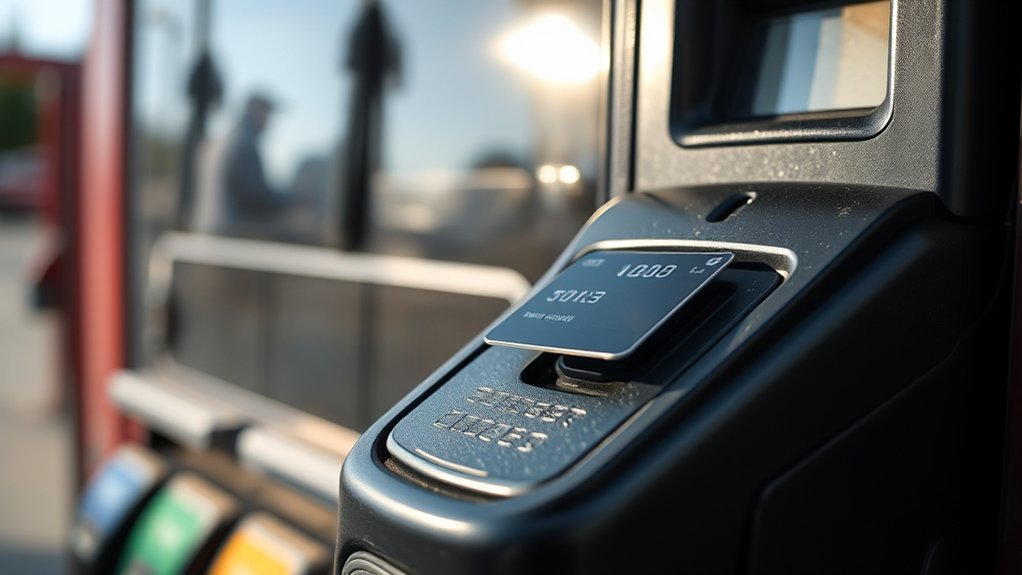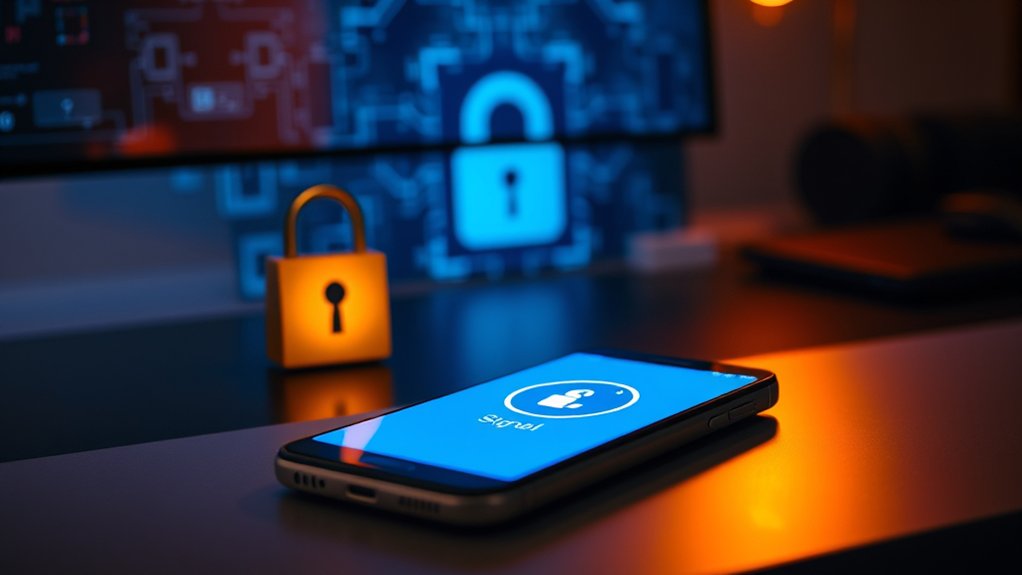Skimmers are covert devices and malware that capture sensitive payment information, posing severe security threats to consumers and merchants alike. These devices, often hidden in ATMs and gas pumps, play a role in unauthorized transactions and identity theft, resulting in annual financial losses exceeding $1 billion globally. Consumers are particularly susceptible when utilizing unprotected payment systems. Awareness and preventive measures are essential to mitigate these risks, highlighting the importance of ongoing vigilance and cybersecurity. Further insights on this topic can be investigated.

Skimmers represent a significant threat to both consumers and businesses, exploiting vulnerabilities in payment systems to commit fraud. Physical skimming involves attaching devices to ATMs or point-of-sale (POS) terminals, effectively capturing card data during transactions. Digital skimming takes a more sophisticated approach, utilizing malware to compromise e-commerce sites. E-skimming particularly refers to malware injected into online platforms to steal sensitive card information at checkout. Alarmingly, various techniques such as keylogging malware, which records keystrokes, further endanger users by exposing login credentials.
Skimmers pose a substantial risk, exploiting payment vulnerabilities through physical devices and sophisticated malware to steal sensitive information.
Furthermore, phishing campaigns ensnare vulnerable individuals into divulging personal information through deceitful emails or fake websites. The repercussions of skimming manifest as significant security breaches. Data theft translates into unauthorized transactions, whereas identity compromise can lead to the leakage of personal identifiable information, including names and Social Security numbers. Alarmingly, digital skimmers can remain undetected on compromised sites for months or even years, further amplifying the risks. Consumers must remain informed about cybersecurity risks associated with these threats to protect themselves effectively.
Global losses from skimming fraud exceed $1 billion annually, illustrating the severe financial impact on individuals and institutions. Beyond monetary consequences, merchants faced with a skimming incident experience reputational damage, leading to a loss of trust among customers. Legal ramifications likewise exist; perpetrators can incur substantial penalties, including imprisonment. Additionally, financial liabilities resulting from skimming incidents can cause a cascade of economic losses impacting national security.
Skimmers utilize a range of devices to facilitate their thefts, often hidden within ATMs, gas pumps, or POS terminals. Pinhole cameras and fake PIN pads capture vital information such as PIN entries. Public benefits cards, particularly EBT cards, remain targets owing to their lack of chip security, whereas tourist areas represent ideal locations for physical skimming because of high transaction volumes.
For individuals, prevention strategies include thorough inspections of terminals before use, shielding keypads while entering PINs, and frequent monitoring of accounts. Many experts recommend favoring chip-enabled cards over magnetic stripe cards for added security.
Organizations must implement rigorous security measures, including regular audits and thorough inventory management, to combat both physical and digital skimming attempts. Failure to address these vulnerabilities can profoundly compromise security for consumers and businesses alike.
Frequently Asked Questions
Can Skimmers Be Detected by Regular Consumers?
Skimmers can be detected by vigilant consumers through several methods.
Visual inspection of card readers may reveal loose components or unusual markings. Tactile feedback is crucial; legitimate devices typically feel stable.
Comparison techniques, such as examining nearby equipment for discrepancies, furthermore assist in detection.
Moreover, mobile applications can identify suspicious devices via Bluetooth, thereby enhancing consumer awareness and protection against potential skimming threats, highlighting the significance of proactive vigilance in safeguarding personal financial data.
What Should I Do if I Find a Skimmer?
Upon finding a skimmer, individuals should report the device to local law enforcement immediately.
Such devices compromise financial security, and prompt reporting aids investigations.
It is advisable not to remove the skimmer without ensuring personal safety, as tampering may be dangerous.
Informing the relevant gas station or ATM operator is critical for consumer protection, as documenting the skimmer through photographs can provide valuable evidence for authorities during their inquiry.
Are All Skimmers the Same Type?
Not all skimmers are the same type; different categories exist, each with distinct methods of operation.
Overlay skimmers are externally placed, whereas internal skimmers require placement inside devices, complicating detection. Wireless skimmers facilitate remote data theft, utilizing Bluetooth technology.
Further, keypad overlays particularly target PIN entry. According to security experts, understanding these variations is essential for recognizing vulnerabilities, as specific settings, such as ATMs or gas pumps, often present increased risks for skimming activities.
How Can Businesses Protect Against Skimmers?
Businesses can implement multiple strategies to protect against skimmers.
To begin with, securing payment terminals through physical barriers and regular inspections minimizes tampering risks. Adhering to PCI SSC standards guarantees the use of approved devices.
Furthermore, staff training on skimming detection is crucial; employees should report suspicious activities without delay. Incorporating technological safeguards, such as encryption and system monitoring, further improves security.
Experts highlight that diverse approaches appreciably reduce potential vulnerabilities in payment systems.
Do Skimmers Only Target Particular Locations?
Skimmers target a wide range of locations, reflecting their evolving strategies. Convenience stores, grocery stores, and gas pumps remain popular, particularly in high-traffic areas.
Furthermore, ATMs in tourist locales and self-checkout kiosks often become victims, capitalizing on lighter security measures. Experts highlight that vulnerabilities can exist at any point-of-sale device, reinforcing the need for vigilant monitoring.
This diversification of targets illustrates the increasing sophistication of skimming methods and their pervasive threat.









